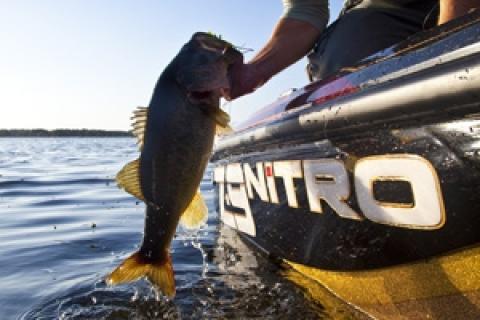
 Usually I focus on one type of fishing or hunting for this blog, but for this week I thought it would be a nice change of pace to offer a mixed bag of tips for various kinds of fishing. The theme for these tips is obvious: early season conditions. We'll look at tactics that work when waters are cold from the long winter, but just starting to warm up a bit. Hopefully one or two of these tips will increase your fishing success as spring slowly slouches in.
Usually I focus on one type of fishing or hunting for this blog, but for this week I thought it would be a nice change of pace to offer a mixed bag of tips for various kinds of fishing. The theme for these tips is obvious: early season conditions. We'll look at tactics that work when waters are cold from the long winter, but just starting to warm up a bit. Hopefully one or two of these tips will increase your fishing success as spring slowly slouches in.
Largemouths
A large percentage of strikes on spinnerbaits from early season bass will come "on the drop." Cast to holding cover such as weeds, rocks, points or sunken logs. Then let the lure free fall with no tension on the line, but without excessive slack. Watch for a slight twitch sideways or an abrupt halt in the lure's fall. Then set the hooks quickly. If you don't get a strike, crank in and cast to a new target.
White Bass
These fish often school in deep pools on the lower sections of feeder rivers and creek arms of major impoundments in winter in preparation for their spawning runs. Prospect for them with 1/8-1/32 ounce white grubs, spinners, spinnerbaits and small spoons, working your lures slowly along the bottom of the lowest pools where tributaries feed the main lake. When you locate one fish, stick with that spot at least for a while. Whites are schooling fish and there may be others nearby.
Walleyes
These fish often migrate up feeder arms of lakes in spring or up the main river channel forming the lake. Look for walleyes concentrated below heavy rapids or behind dams in tailwaters. Casting jigs tipped with minnows, nightcrawlers or a plastic trailers is a great way to take them. Let the offering sink to the bottom, then inch them back. These fish will be active even if water temperatures are in the 40s. Also try crankbaits and jerkbaits with a soft wobbling motion near sunset or after dark.
Trout
For your earliest trout fishing trips, concentrate on waters with populations of brookies. These fish favor colder water than browns or rainbows and begin feeding heavily sooner in the year than both of those species. The smaller, shallower headwaters where brookies are often found also tend to warm up more quickly than larger brown and rainbow trout streams.
Smallmouths
When waters are still cold in spring, look for river smallmouth bass in areas protected from the main force of the current — behind boulders, in back eddies, beneath undercut banks, at the bottom of deep, slow pools.
'Two methods stand out for taking these still-lethargic bass. One is to drift a lip-hooked minnow through the likely water with just a split shot or two for weight. The other is to bounce a 1/8 to 1/4 ounce black, brown or purple jig tipped with a small black pork rind frog along the bottom, reeling in as slowly as possible. Both tactics will produce, and you'll find bass taken in these early months are consistently larger than those you catch during balmy summer outings.
One More Tip — Timing
Try to watch weather patterns and time your trips for the peak of warm spells. Early spring weather is notoriously fickle. By planning your trips to hit the lake or river after a few days of mild weather, you'll be dealing with water temperatures several degrees warmer and fish that are actively feeding, rather than shut down by the cold.
And that, in a nutshell, sums up the appeal of all types of angling in early spring: The action might be a bit slower, but there's no better time of year to latch onto a trophy-sized catch.
- 3344 views

